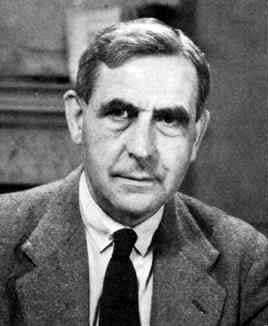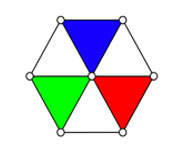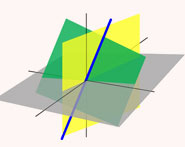


 تاريخ الرياضيات
تاريخ الرياضيات
 الرياضيات في الحضارات المختلفة
الرياضيات في الحضارات المختلفة 
 الرياضيات المتقطعة
الرياضيات المتقطعة
 الجبر
الجبر
 الهندسة
الهندسة 
 المعادلات التفاضلية و التكاملية
المعادلات التفاضلية و التكاملية 
 التحليل
التحليل
 علماء الرياضيات
علماء الرياضيات |
Read More
Date: 12-9-2017
Date: 26-9-2017
Date: 14-9-2017
|
Died: 6 September 1967 in Chamonix, France

Albert Ingham's father was Albert Edward Ingham (born about 1875 in Northampton) who was a foreman in a boot manufacturing factory. His mother was Annie Gertrude Ingham (born about 1876 in Northampton). Albert Edward Ingham (our mathematician) had an older brother Christopher Augustus (born about 1897), and two younger sisters Phyllis Gertrude (born about 1904) and Lilian Grace (born about 1910).
Albert Ingham was educated at Stafford Grammar School, and from there he won a scholarship to Trinity College, Cambridge, in December 1917. After spending a few months in the army towards the end of World War I, he began his studies in January 1919. An outstanding undergraduate career saw him awarded distinction in the Mathematical Tripos and win a Smith's prize and the highest honours. In 1922 he was elected to a fellowship at Trinity for a dissertation on the zeta function and his next four years were occupied only with research, a few months of which were spent at Göttingen. During this time Ingham was greatly influenced by Littlewood who gave him the advice to:-
... work at a hard problem: you may not solve it but you'll solve another one.
In 1926 Ingham was appointed a Reader at Leeds University but four years later returned to Cambridge as a university lecturer and a fellow of King's College, on the death of Ramsey, and remained there for the rest of his life. He was elected a Fellow of the Royal Society in 1945 and became a Reader in Mathematical Analysis in 1953.
His book On the distribution of prime numbers published in 1932 was his only book and it is a classic. Many of the ideas here, as in other work of Ingham's, came from the joint work undertaken by Harald Bohr and Littlewood. When his famous text [1]:-
... ran out of print, Ingham could never be persuaded to prepare a second edition. The partial rewriting necessary to bring it up to date would have meant, with his exacting standards, more toil than he could face.
Ingham's work was on the Riemann zeta function, the theory of numbers, the theory of series and Tauberian theorems.
He generalised work on the prime number theorem of Hadamard and Vallée Poussin. The result for which Ingham is best known, however, relates to pn+1 - pn where pndenotes the nth prime. It was proved by Hoheisel in 1930 that there is a constant k such that
pn+1 - pn < pnk
for all sufficiently large n. In On the difference between two consecutive primes (1937) Ingham proved that the result holds for k = 5/8.
Pólya, in 1919, made the following conjecture:
Suppose λ(n) = 1 if n has an even number of prime factors, -1 if n has an odd number of prime factors (counting multiplicities) then let L(x) be the sum of λ(n) over all positive integers less than n. The conjecture is that L(x) ≤ 0.
Ingham, in 1942, was able to find an ingenious method to show how a counterexample could be constructed. It still required computing power to find the counterexample and, using Ingham's method, a counterexample was found by R S Lehman in 1960 when he showed that L(906180359) = 1.
Some of Ingham's work on number theory was carried further by Linnik. He also worked on Tauberian theorems. He proved results suggested by Norbert Wiener, and he applied methods which had first been developed by Wiener.
Ingham led a life of great simplicity. Burkill describes it in these terms:-
It did not occur to him to want a car or a radio, let alone a television set. For forty years he used a Sunbeam bicycle that he had won as a school prize. He was an expert photographer: he developed his own colour films and did everything from first principles. He was a good cricketer ... who would have been of minor county class if he had been able to give the time.
He died while on a walking holiday in the mountains. He and his wife, Rose Marie Tuper-Carey whom he married in 1932, had taken this type of holiday every summer for many years.
In [1] Ingham is described in the following words:-
Ingham was the embodiment of meticulous accuracy. Nothing slipshod came from his hand, his tongue or his pen. He lectured with force and clarity. He would apply the same standards to chores (such as setting examination questions) over which most dons are sparing of time and effort. His friends believed that, if he could have treated trifles more lightly, some of the problems still intact might have been reduced by his magnificent analytic power
Articles:



|
|
|
|
التوتر والسرطان.. علماء يحذرون من "صلة خطيرة"
|
|
|
|
|
|
|
مرآة السيارة: مدى دقة عكسها للصورة الصحيحة
|
|
|
|
|
|
|
نحو شراكة وطنية متكاملة.. الأمين العام للعتبة الحسينية يبحث مع وكيل وزارة الخارجية آفاق التعاون المؤسسي
|
|
|